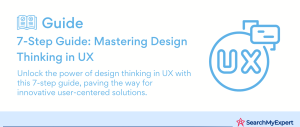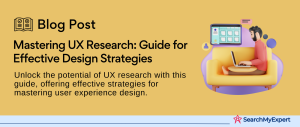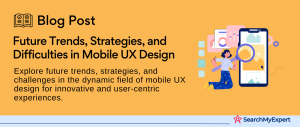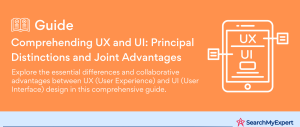Understanding the Synergy of UX Design and Agile Development
What is UX Design?
Unraveling the Essence of User Experience
UX Design, short for User Experience Design, centers on crafting products that provide meaningful and relevant experiences to users. This involves the design of the entire process of acquiring and integrating the product, including aspects of branding, design, usability, and function.
Core Principles of UX Design
- User-Centered Design:
This principle places the user at the heart of the design process. Every decision is made with the user’s needs and preferences in mind. - Usability: It’s all about making products that are convenient, efficient, and satisfying to use.
- Accessibility: Ensuring that products are usable by people with a wide range of abilities and disabilities.
What is Agile Development?
Agile: A Modern Approach to Software Development
Agile Development is a set of practices for software development based on iterative progress, where requirements and solutions evolve through collaboration between self-organizing cross-functional teams.
Key Principles of Agile Methodology
- Iterative Development:
Breaking down the project into smaller segments, allowing for frequent reassessment and adaptation. - Sprints: Short, time-boxed periods where a specific work has to be completed and made ready for review.
- Continuous Feedback:
Regular feedback from end-users ensures that the product meets their needs and expectations.
Why Combine UX and Agile?
Merging for Enhanced Efficiency and User Satisfaction
Combining UX and Agile harnesses the strengths of both approaches. It leads to products that are not only developed quickly and efficiently but are also deeply user-centric.
Benefits of Merging UX and Agile
- Faster Iteration:
Agile’s iterative cycles complement UX’s focus on user feedback, leading to rapid improvements. - User-Focused Development:
Integrating UX in Agile ensures that user needs are considered at every stage. - Reduced Risk of Failure:
Regular user testing and feedback reduce the likelihood of product-market mismatch.
Adapting UX for Agile Sprints: A Collaborative Approach
Breaking Down UX Tasks into Sprints
Agile sprints, typically lasting a few weeks, require tasks to be concise and manageable. Integrating UX design into these sprints involves careful planning and execution.
Streamlining UX in Agile Framework
- UX Research: Conduct quick, focused research tasks like user interviews or surveys to gather insights that inform the sprint goals.
- Ideation: Host brief brainstorming sessions to generate ideas that align with user needs and sprint objectives.
- Prototyping: Develop rapid prototypes to visualize ideas. These should be quick to produce and easy to modify.
- Testing: Implement short, iterative testing cycles to validate prototypes against user needs and sprint goals.
Prioritizing User Needs
In Agile sprints, prioritizing user needs is crucial for maximizing impact and ensuring feasibility.
Techniques for Prioritization
- Impact vs. Feasibility Matrix: Assess and rank features based on their potential impact on the user and the feasibility of implementing them within the sprint.
- User Story Mapping: Create user stories to understand and prioritize user needs based on their journey.
- MoSCoW Method: Categorize features as Must have, Should have, Could have, or Won’t have for the current sprint.
Integrating UX with Development
Close collaboration between UX designers and developers is vital for Agile success.
Strategies for Effective Collaboration
- User Story Creation:
Collaboratively create user stories that encapsulate both UX insights and technical requirements. - Design Reviews:
Regularly conduct design reviews involving both designers and developers to ensure alignment and address any technical constraints. - Cross-Functional Teams: Form teams that include both UX designers and developers to foster ongoing collaboration and understanding.
User Research in Agile Environments: Agile-Friendly Methods for Insightful Data
Lean UX Research Methods
In Agile environments, UX research needs to be quick, adaptable, and efficient. Implementing lean UX research methods ensures that user insights can be gathered and applied rapidly.
Agile-Compatible Research Techniques
- User Interviews: Conduct short, focused interviews to gather qualitative insights rapidly.
- A/B Testing: Compare two versions of a feature or product to understand user preferences and behaviors.
- Usability Heuristics: Evaluate designs using established usability principles for quick, actionable feedback.
Continuous User Feedback
Continuous user feedback is the cornerstone of Agile UX. It allows teams to stay aligned with user needs and expectations throughout the development process.
Techniques for Ongoing Feedback
- Surveys: Deploy quick, targeted surveys to gather user opinions and preferences.
- Prototypes: Use prototypes to gather feedback on design concepts and usability.
- Beta Testing:
Release beta versions to real users to obtain feedback on the overall user experience.
Data-Driven Decision Making
In Agile, decisions should be informed by real user data to ensure that design choices align with user needs and business objectives.
Leveraging Research Data in Sprints
- Analyzing User Data:
Systematically analyze feedback and research data to uncover user needs and pain points. - Informing Design Decisions: Use insights from user research to guide design choices and feature development.
- Prioritizing Features:
Apply user research data to prioritize features based on what will provide the most value to users within the constraints of the sprint.
Agile Prototyping and Iteration: Crafting and Refining with Speed and Precision
Rapid Prototyping in Agile
In Agile environments, rapid prototyping is invaluable. It enables teams to quickly visualize ideas, test hypotheses, and gather user feedback, all within tight timelines.
Embracing Low-Fidelity Prototyping
- Quick Visualization:
Create sketches or wireframes to convey ideas rapidly. - Early Testing: Use prototypes to test concepts and gather feedback early in the development process.
- Collaborative Creation: Encourage team members, including developers and stakeholders, to contribute to prototyping for diverse perspectives.
Usability Testing in Sprints
Usability testing within sprints ensures that the product is not only developed quickly but also meets user expectations for functionality and ease of use.
Sprint-Friendly Testing Methods
- Guerilla Testing: Conduct impromptu tests with users available in public spaces or within the organization for immediate feedback.
- Remote Testing Sessions: Leverage online tools to conduct usability tests remotely, allowing for broader user participation.
Iterative Design Refinement
The essence of Agile is iteration – constantly refining products based on user feedback.
Continuous Improvement through User Feedback
- Analyzing Feedback: After each test, analyze feedback to identify areas for improvement.
- Refining Designs:
Incorporate user feedback into design revisions, focusing on enhancing user experience and usability. - Ongoing Iteration:
Treat each sprint as an opportunity to refine and enhance the product, based on continuous user feedback.
Collaboration and Communication in Agile UX: Fostering Team Synergy for User-Centric Solutions
Cross-Functional Teams in Agile UX
The success of Agile UX largely hinges on the seamless collaboration of diverse roles. This multidisciplinary approach brings together varied perspectives, enhancing the development process.
The Power of Team Synergy
- UX Designers and Developers:
Their collaboration ensures that design decisions are feasible and aligned with technical capabilities. - Product Managers: They bridge the gap between user needs, business goals, and technical constraints.
- Stakeholder Involvement:
Regular involvement of stakeholders ensures that the team’s efforts align with broader organizational goals.
Effective Communication in Agile Teams
Clear, concise communication is the backbone of Agile teams, enabling efficient collaboration and quick decision-making.
Strategies for Clear Communication
- Regular Stand-Ups:
Daily or weekly meetings keep everyone informed about progress and challenges. - Visual Communication Tools:
Use tools like Kanban boards or user journey maps for visual representation of progress and user insights. - Documentation:
Maintain concise, up-to-date documentation for design decisions and user research findings.
Building a Culture of User-Centricity
In Agile UX, fostering a culture that consistently prioritizes user needs is crucial for creating products that truly resonate with users.
Cultivating User-Centric Values
- Constant User Focus:
Encourage every team member to consider user impact in their decisions. - Regular User Feedback: Integrate user feedback into the development cycle to guide product evolution.
- Empathy Building:
Conduct regular team activities to deepen understanding and empathy for the user experience.
Measuring UX Success in Agile Environments: Tracking and Enhancing User Experience
Metrics for Usability and User Satisfaction
In Agile, measuring UX success is vital for understanding the impact of design decisions and guiding future improvements.
Key Metrics for UX Success
- Conversion Rates:
Measure the effectiveness of the design in driving desired user actions. - Task Completion Times:
Track how long it takes users to complete key tasks, indicating usability. - User Feedback Scores:
Collect user ratings on satisfaction, usability, and overall experience.
A/B Testing and Data Analysis
A/B testing and thorough data analysis are crucial in Agile for making informed, evidence-based design decisions.
Utilizing Data for UX Insights
- A/B Testing: Compare different versions of a feature or design to determine which performs better in terms of user engagement and satisfaction.
- Data Analysis:
Analyze user interaction data to understand how users engage with the product and identify areas for improvement.
Continuous Improvement
In Agile UX, the goal is always to evolve and refine the user experience based on data and feedback.
Leveraging Data and Feedback for UX Enhancement
- Ongoing Feedback Analysis:
Regularly review user feedback to understand their needs and pain points. - Iterative Design Tweaks:
Use insights from data and feedback to make incremental improvements to the UX. - Adaptive Strategy: Be prepared to adjust UX strategies based on continuous learning from user data.
The Future of UX Design in Agile: Trends, Challenges, and Human-Centric Focus
Emerging Trends in Agile UX
The landscape of Agile UX is continually evolving, incorporating innovative practices and technologies to enhance user experience design.
Cutting-Edge Trends Shaping Agile UX
- Design Thinking: Integrating design thinking into Agile to foster creativity and innovation in solving user problems.
- UX Automation: Using tools and platforms to automate repetitive UX tasks, allowing designers to focus on more complex aspects of UX design.
- Artificial Intelligence in UX: Leveraging AI to analyze user data, predict user behavior, and personalize user experiences.
Challenges and Opportunities in Agile UX
Adopting Agile UX in complex projects and large organizations presents its own set of challenges and opportunities.
Navigating the Agile UX Landscape
- Scaling Agile UX: Adapting Agile UX practices to fit large-scale projects and organizational structures.
- Cross-Department Collaboration:
Encouraging collaboration between different departments to ensure a cohesive user experience. - Balancing Speed and Quality: Maintaining a balance between the rapid pace of Agile and the need for high-quality, thoughtful UX design.
The Importance of Human-Centered Design
Even as Agile UX evolves with new trends and technologies, the core principle of human-centered design remains paramount.
Prioritizing User Needs in Agile
- User-Centric Approach: Keeping the focus on user needs and experiences, even as methodologies and tools evolve.
- Empathy in Design:
Ensuring that technology serves to enhance, not replace, the human aspect of user experience. - Inclusive Design: Creating designs that are accessible and beneficial to a diverse range of users.
The future of UX design in Agile environments lies in embracing emerging trends while upholding the principles of human-centered design. By navigating its challenges and seizing its opportunities, Agile UX can continue to innovate and adapt, ensuring that technology remains a tool for enhancing human experiences.
Conclusion
In this journey through the integration of UX Design and Agile methodologies, we’ve explored the nuances, strategies, and future prospects of this dynamic collaboration. The convergence of these two fields is not just a trend; it’s a necessary evolution in a world where user needs are constantly changing and technology is rapidly advancing. The fusion of UX Design with Agile represents a commitment to continuous improvement, adaptability, and a deep-rooted focus on the user. By breaking down silos between designers, developers, and stakeholders, and by embedding user-centric thinking into every aspect of the product development process, organizations are better equipped to create products that are not only technologically sound but also deeply resonate with their users.
The journey of integrating UX Design and Agile is ongoing. As we adapt to new challenges, embrace emerging trends, and continue to place the user at the center of every decision, we pave the way for products that not only meet the demands of the present but are also ready for the challenges and opportunities of the future.
Revolutionize your digital platforms with our UX Designing Services.
Table of Contents
Toggle






